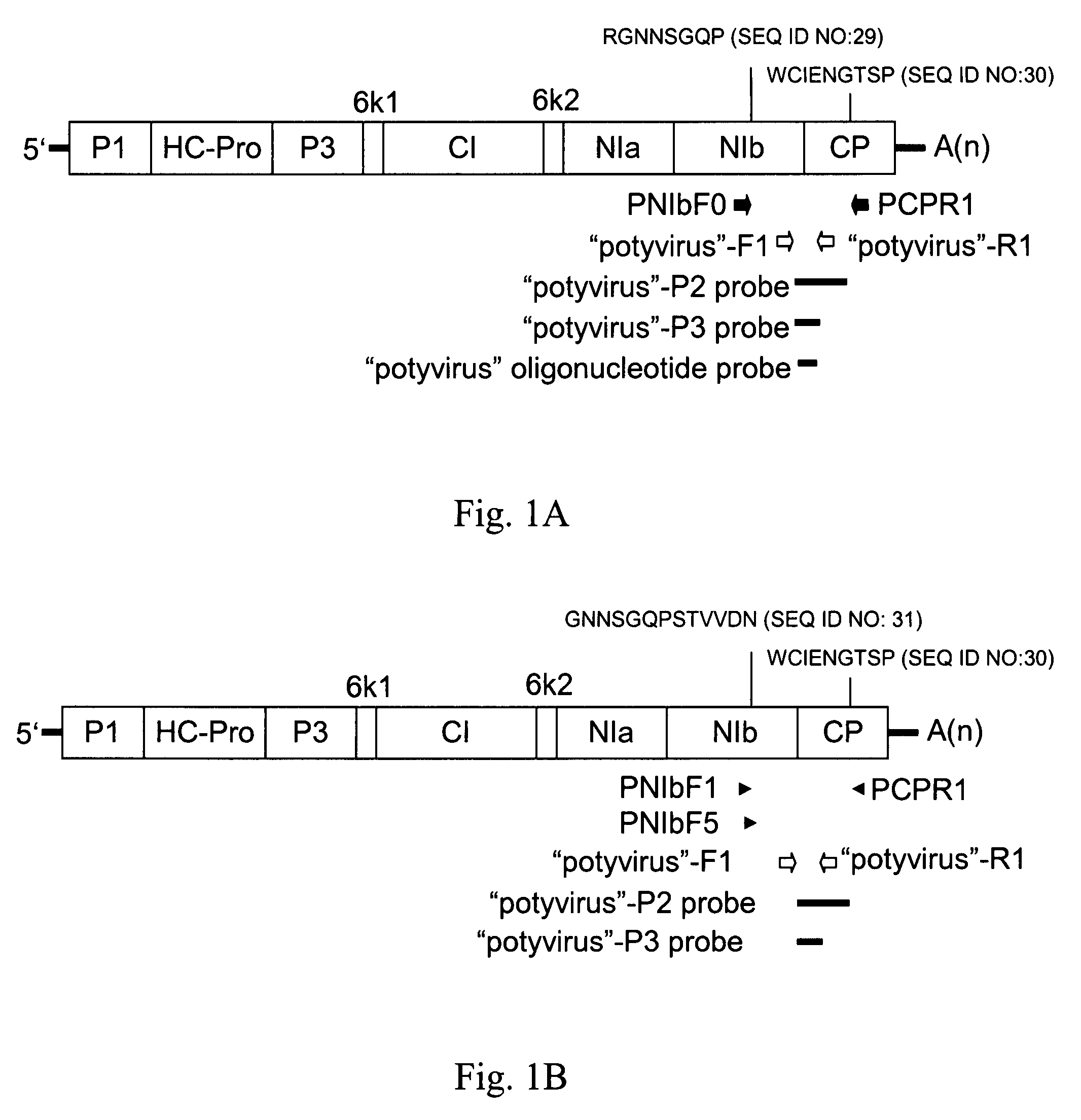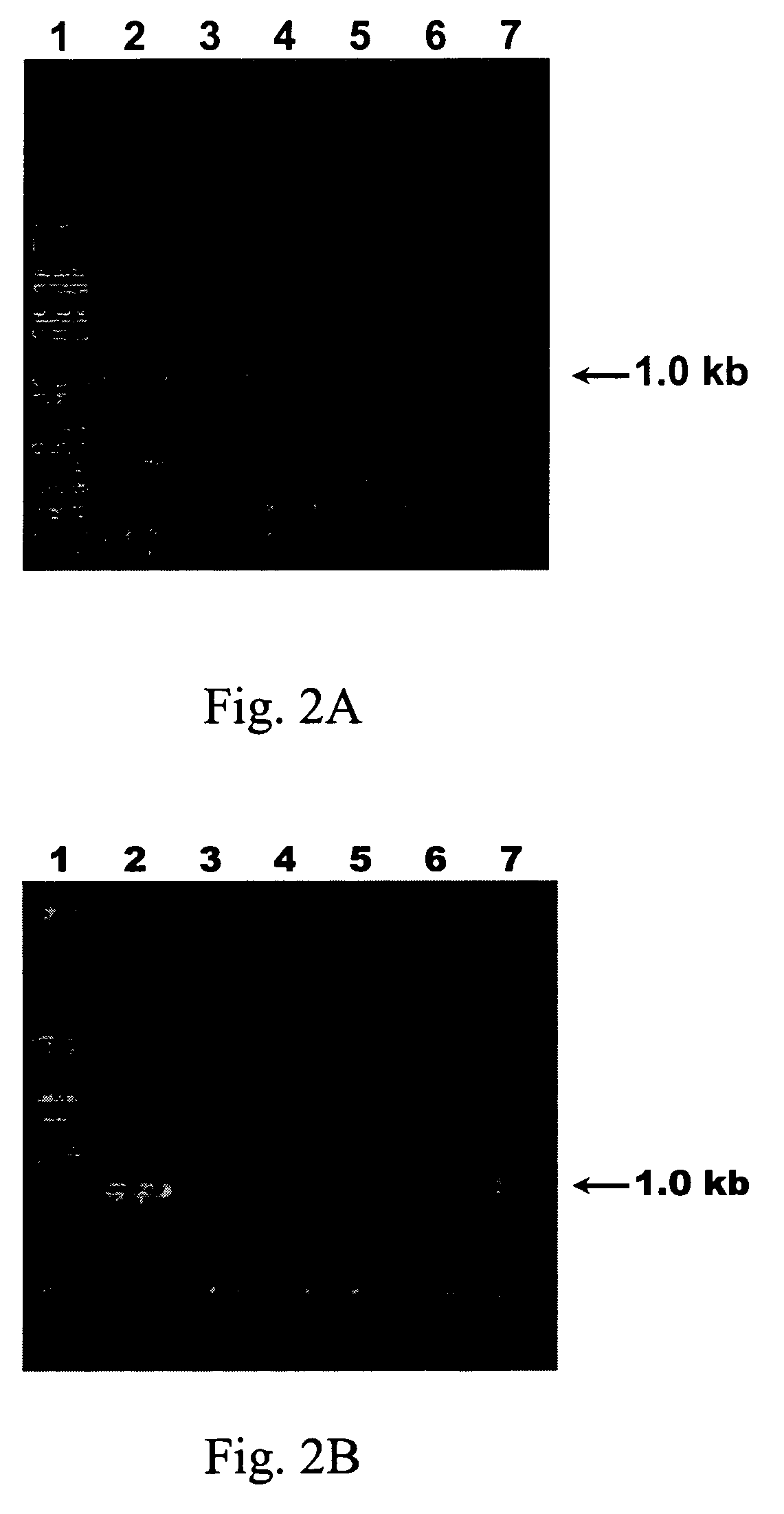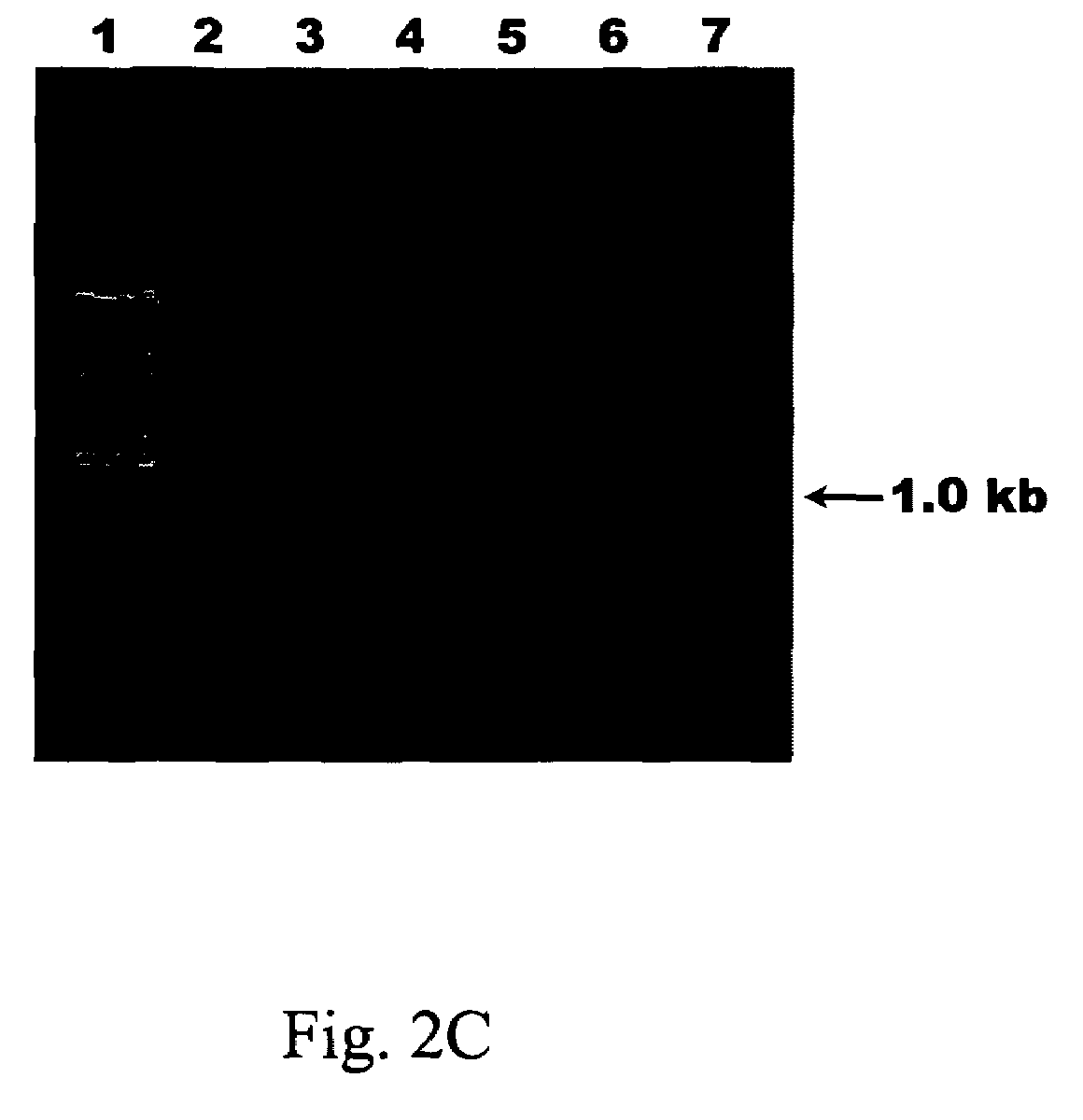Species-specific probes for identification of target virus and identification method using said probes
a technology of target virus and probe, which is applied in the field of species-specific probe for the identification of target virus and identification method using said probes, can solve the problem that the currently available technique cannot effectively distinguish the specific unknown virus species
- Summary
- Abstract
- Description
- Claims
- Application Information
AI Technical Summary
Problems solved by technology
Method used
Image
Examples
example 1
Specificity of Potyvirus Degenerate Primers
[0095]The total RNA of the plants infected with six different viruses, including cucumovirus (CMV), potexvirus (CymMV), tombusvirus (TBSV), tobamovirus (TMGMV), and potyviruses (PVA and ZYMV), respectively was subjected to RT-PCR analysis using the degenerate primer pair PCPR1 / PNIbF0.
[0096]Referring to FIG. 2A, total RNA of different virus-infected plants was loaded in the 1% agarose gel electrophoresis, wherein lane 1 was loaded with 1 kb plus DNA ladder (Invitrogen, CA, USA), lane 2 was loaded with ZYMV-infected Cucurbita pepo, lane 3 was loaded with PVA-infected Nicotiana benthamiana, lane 4 was loaded with TMGMV-infected Nicotiana benthamiana, lane 5 was loaded with TBSV-infected Nicotiana benthamiana, lane 6 was loaded with CymMV-infected Phalaenopsis spp. and lane 7 was loaded with CMV-infected Nicotiana benthamiana.
[0097]Accordingly, these primers only generated a specific 1.0-kb RT-PCR product with PVA and ZYMV, they did not amplif...
example 2
Virus Detection and cDNA Cloning
[0101]To confirm further the application spectrum of these degenerate primers, eight different potyviruses were detected separately in inoculated propagation hosts by RT-PCR using PCPR1 as the RT primer and subsequently using PCPR1 / PNIbF0 as PCR primers. The expected band on the agarose gel after RT-PCR amplification was about 1.0-1.2 kb. DsMV, ZaMMV, TuMV and PRSV had RT-PCR products about 1.2 kb amplified by PCPR1 / PNIbF0 primers (FIG. 3A), whereas ZaMV, ZYMV, PVA and PVY had RT-PCR products of about 1.0 kb amplified by PCPR1 / PNIbF0 primers (FIG. 3A).
[0102]Alternatively, six different potyviruses were detected separately in inoculated propagation hosts by RT-PCR using PCPR1 as the RT primer and subsequently using PCPR1 / PNIbF1 or PCPR1 / PNIbF5 as PCR primers. The expected band on the agarose gel after RT-PCR amplification was about 1.0-1.2 kb. PRSV and TuMV had RT-PCR products about 1.2 kb amplified by PCPR1 / PNIbF1 primers (FIG. 3B). DsMV, PVY, ZaMV an...
example 3
Specificity of the Species-Specific cDNA Probes
[0104]Two types of cDNA probes were prepared for each potyvirus by PCR amplification. The “potyvirus”-P2 probes started from “potyvirus”-F1 primer and ended at PCPR1 primer. The “potyvirus”-P3 probes started from “potyvirus”-F1 primer and ended at “potyvirus”-R1 primer (Table 1). The specificity of the species-specific cDNA probes was evaluated by dot blot hybridization. Next, 3 ng of unlabeled P2 and P3 probes were immobilized onto a nylon membrane and each probe had a duplicate. And 10 ng of the DIG-labeled PCR fragment of each virus selective clone amplified with primers PCPR1 and PNIbF0 was used to hybridize with the nylon membrane immobilized with the probes. Accordingly, the P2 and P3 probes hybridized with target virus without non-specific hybridization to non-target virus (not shown).
[0105]Moreover, the PCR fragments of each virus clone amplified by PCPR1 and PNIbF1 were applied to a nylon membrane. The DIG-labeled species-speci...
PUM
| Property | Measurement | Unit |
|---|---|---|
| temperature | aaaaa | aaaaa |
| volume | aaaaa | aaaaa |
| volume | aaaaa | aaaaa |
Abstract
Description
Claims
Application Information
 Login to View More
Login to View More - R&D
- Intellectual Property
- Life Sciences
- Materials
- Tech Scout
- Unparalleled Data Quality
- Higher Quality Content
- 60% Fewer Hallucinations
Browse by: Latest US Patents, China's latest patents, Technical Efficacy Thesaurus, Application Domain, Technology Topic, Popular Technical Reports.
© 2025 PatSnap. All rights reserved.Legal|Privacy policy|Modern Slavery Act Transparency Statement|Sitemap|About US| Contact US: help@patsnap.com



